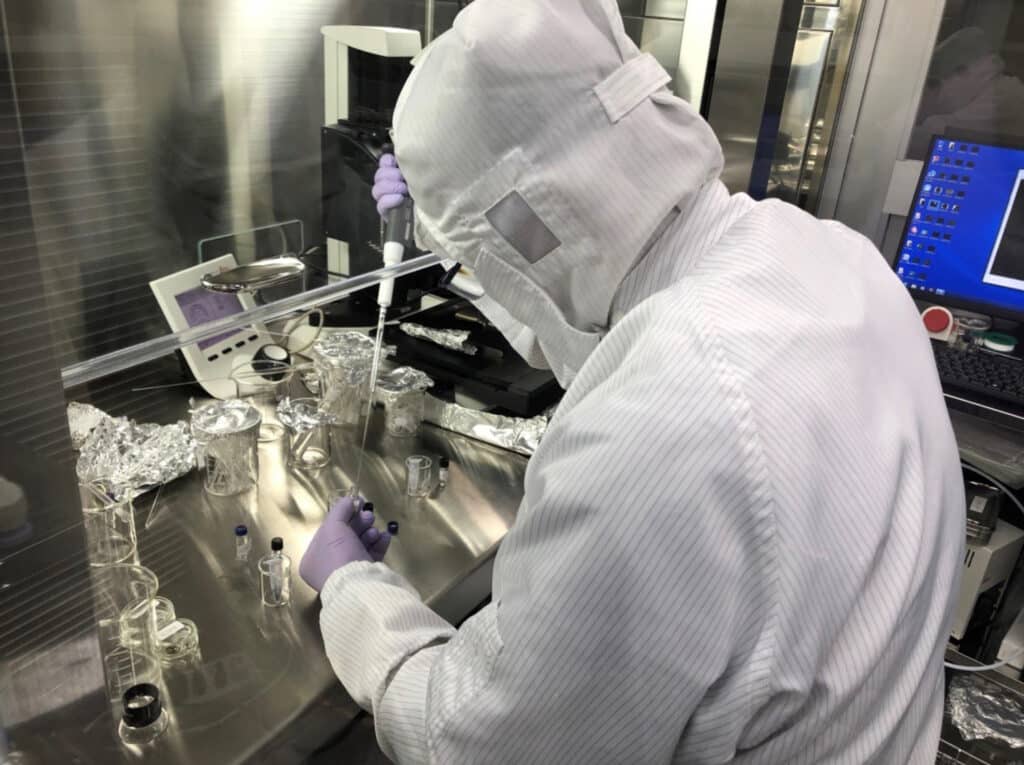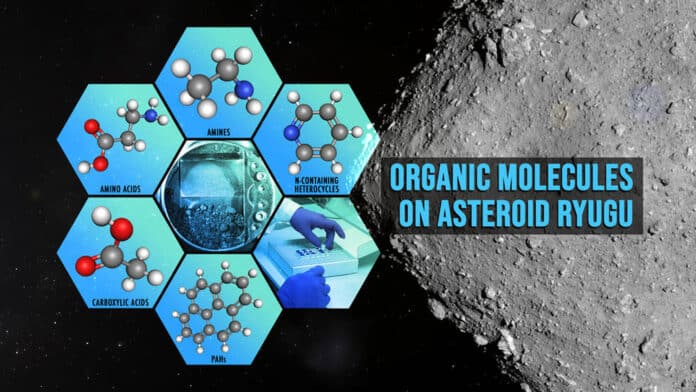In December 2020, the Hayabusa2 spacecraft brought back the samples of the carbonaceous asteroid Ryugu to Earth. A NASA and international team’s initial sample analysis reveals that asteroid Ryugu has a rich complement of organic molecules.
All known terrestrial life forms are composed of organic molecules, a diverse range of compounds formed of carbon combined with hydrogen, oxygen, nitrogen, sulphur, and other elements. The idea that chemical processes in asteroids can create some of the components of life is supported by the fact that organic molecules can also be produced by chemical processes that do not include life.
Many different types of amino acids were among the prebiotic organics detected in the sample. Prebiotic chemistry studies the substances and processes that may have given rise to life. Terrestrial life uses specific amino acids often as building blocks for proteins.
Proteins are necessary for life because they are used to create enzymes that speed up or control chemical reactions and create structures of all sizes, including hair and muscles. The sample also contains a variety of organic molecules that form when liquid water is present, such as aliphatic amines, carboxylic acids, polycyclic aromatic hydrocarbons, and heterocyclic compounds containing nitrogen.
Hiroshi Naraoka of Kyushu University, Fukuoka, Japan, said, “The presence of prebiotic molecules on the asteroid surface despite its harsh environment caused by solar heating and ultraviolet irradiation, as well as cosmic-ray irradiation under high-vacuum conditions, suggests that the uppermost surface grains of Ryugu have the potential to protect organic molecules.”
“These molecules can be transported throughout the solar system, potentially dispersing as interplanetary dust particles after being ejected from the uppermost layer of the asteroid by impacts or other causes.”

Jason Dworkin of NASA’s Goddard Space Flight Center in Greenbelt, Maryland, said, “So far, the amino acid results from Ryugu are mostly consistent with what has been seen in certain carbon-rich (carbonaceous) meteorites that have been exposed to the most water in space.”
Daniel Glavin of NASA Goddard, a paper co-author, said, “However, sugars and nucleobases (components of DNA and RNA), which have been discovered in some carbon-rich meteorites, have not yet been identified in samples returned from Ryugu. It is possible these compounds are present in asteroid Ryugu but are below our analytical detection limits given the relatively small sample mass available for study.”
Dworkin said, “This work is the first organic analysis of the Ryugu sample, which will be studied for years. We will make a direct comparison of the samples from Ryugu and the sample from asteroid Bennu when NASA’s OSIRIS-REx mission returns it to Earth in 2023. OSIRIS-REx is expected to return much more sample mass from Bennu and will provide another important opportunity to look for trace organic building blocks of life in a carbon-rich asteroid.”
Journal Reference:
- Hiroshi Naraoka et al. Soluble organic molecules in samples of the carbonaceous asteroid (162173) Ryugu. Science. DOI: 10.1126/science.abn9033
